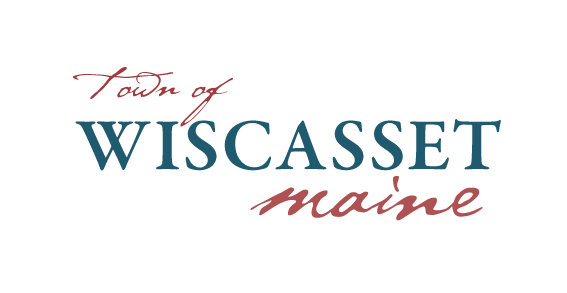Historic and Prehistoric Overview
Earle Shettleworth, Director of the Maine Historic Preservation Commission, cites Wiscasset as one of three architecturally significant villages in the state, along with the towns of Paris Hill and Castine. Samuel Chamberlain, in his book Towns of New England, chose Wiscasset to represent the State of Maine. He noted that millions were spent restoring Williamsburg, while Wiscasset remains essentially intact. Today, its abundance of classical architecture is evidenced by the inclusion of 10 structures in the Historic American Buildings Survey (HABS) of 1936 and the subsequent inclusion of five buildings listed on the National Register of Historic Buildings. In 1973, a large part of the Village/Historic District became a part of the National Register. In fact, much of the downtown area is a living field museum and we hold the keys to its future.
The first recorded settlement at Wiscasset was in 1660 by George and John Davie. By 1740, there were 30 families at Wiscasset Point, numbering about 150 people. Wiscasset Point was one of three parishes incorporated in Pownalborough in 1760. It took the name of Wiscasset in 1802.
As Wiscasset prospered as a deep-harbor shipping port during the late 18th and 19th century, grander homes were built beyond the initial simple, smaller homes closer to the harbor. These include the Nickels-Sortwell House, the Wood-Foote House and the Governor Smith House. Other structures of note are the elegant brick courthouse, which is home to the longest continuously operating courthouse in the country; the Old Jail, in operation until the 1950s; the Wiscasset Library; the Town Common; the Sunken Garden; the Ancient Cemetery, and much more.
By the end of the Revolution to the Embargo of 1807, Wiscasset had no equal in any part of Maine as the chief shipping port east of Boston. It was a very prosperous era with so many ships registered here, that it was said you could walk from deck to deck all the way across the harbor and masts were everywhere the eye could see. The Embargo, intended to prevent war with England, failed and Wiscasset fortunes declined from that time, as shipping dried up and creditors loomed. Now we find ourselves, generations later, again seeking new fortunes and new avenues for our community to prosper. And, as surveys have shown a number of times, the majority of townspeople consider Wiscasset's venerable history as unique and something to be proud of and something to preserve for those that will follow after us.
This same majority understand that our historic landscape and heritage is as valuable an asset as are our schools; our still protected, deep-harbor working waterfront; our developing airport; the advent of air/rail/ferry travel with a stop in Wiscasset; and the development potential at both the Mason Station and the Maine Yankee site.
In conclusion, it would be shortsighted at best to discount the economic value of a preserved, nurtured field museum here in our care. Thousands of tourists stop in Wiscasset each year, through at least three seasons of the year. They used to come to see the Old Ships, we failed to preserve those. Now we have a chance to step up to the plate again - this time to preserve a greater prize-our overall historic heritage, proud and unique.
We are past due to put safeguards in place to save our history from disappearing. Just like the Old Ships, it will not be reclaimable once lost. We need to install these safeguards and seek ways to best showcase our historic heritage so that it takes its rightful place as one of Wiscasset's most valued cultural and economic assets.
Prehistoric Archaeology
The Maine Historic Preservation Commission has identified several archaeological site-sensitive areas and known prehistoric archaeological sites. The maps of these sites are on file in the Town Office.
There are two types of marks on these maps - squiggles and cross hatches. The squiggles represent archaeologically-sensitive sites. They are meant to be about 50 meters wide along the shoreline. The squiggles and areas associated with Montsweag Brook and Gardiner Pond are marked because of very high probability that there are sites within these areas, although no archaeological survey work has been done. The crosshatched areas (marshland next to Montsweag Brook and Gardiner Pond) may contain archaeological sites but are less probable than the squiggly locations, according to Dr Arthur Spiess, Senior Archaeologist, in a letter dated February 24, 2004. The other marked shoreline areas (squiggles) contain known archaeological sites. They are mostly Native American campsites of the Ceramic period and/or Contact period (3000 years ago until about 1700 A.D.).
Sites 26.10 and 26.11 are located adjacent to the railroad line north of Town. One of these is a large shell midden or shell heap. Sites 16.212 and 16.213 are small shell midden remnants along the shore near Maine Yankee and on Little Oak Island.
Sites 16.122 and 16.123 are small shell middens at the tip of Chewonki Neck. Site 16.246 is near Cushman Cove and is a small shell midden of prehistoric (undetermined) age.




